#Sutter's Mill
Text

Dig it up from the ground. ☠️🥇⛏🟡(silkscreen on paper)💰🏆
#gold mining#gold miners#gold mine#gold#golden#oro#gold price per gram#gold prices#gold price#gold nugget#gold bars#gold bar#placerville#bodie#ghost town#sierra nevada#sutters mill#monoprint#silkscreen print#silkscreen#printmakers on tumblr#printmaking#print media#outsider art#folk art#poster art#art brut#treasure hunting#treasure map#skull and crossbones
6 notes
·
View notes
Text
"Based on the infrasound signal and the brightness of the fireball in photographs and two video records, the incoming meteoroid was estimated to have been 6.6–13.1 feet (2–4 m) in diameter, between the size of a dish washer[22] and a mini van.[23] Before entry in Earth's atmosphere, the meteoroid probably had an absolute magnitude (H) of roughly 31.[24] The meteoroid entered at a record speed of 64,000 ± 1,600 mph (28.6 ± 0.7 km/s), the fastest fireball on record from which meteorites were later recovered.[9] It broke apart at an altitude of 157,000 ft (48 km), the highest breakup event on record resulting in meteorites on the ground."

0 notes
Text
Suddenly, Letters from Watson dumps us in the middle of the Great American Desert (part 1 of "On the Great Alkali Plain," 2/7/24). This is not anywhere I expected to be transported from London, and the contrast makes the Mountain West feel exotic for a minute.
The Great American Desert -- stretching from about Grand Island, Nebraska to the Sierras and pretty much the entire north-south length of the U.S. -- had become a thing of legend since explorers' accounts in the 1820s. When Dad and I drove across it in 2022, we talked about how incredibly daunting it must have been for emigrants seeking their land of milk and honey on the Pacific coast.
The way we went, out I-80, Nebraska shifts from green to gray as it rises toward the Rockies. After a while, the wind picks up as you go uphill into Wyoming. There's a lot of Wyoming, and after Cheyenne and Laramie (both of which would be small towns in most states), it's very, very empty. When we finally started the descent toward Salt Lake City, and the little valleys beside the road turned green with running water, it was truly like entering paradise.
Of course, in 1847, Salt Lake City was just barely being settled, as Brigham Young led his Latter Day Saints west from Council Bluffs, and its location wasn't part of the U.S. yet.
The Mexican-American war had started the prior year, 1846, and was still going. Spring-summer of 1846 saw the Bear Flag Revolt in California, followed by the U.S. just annexing the state. Gold wouldn't be discovered at Sutter's Mill until 1849, so while emigration to California happened -- the Donner Party made their ill-fated trip in 1846-47 -- it wasn't anything like the scope of movement along the Oregon Trail.
As far as I can tell, "Sierra Blanco" is not a real place. There's a Sierra Blanca in New Mexico -- which would fit with all the specific landscape, plus White Sands National Park in New Mexico specifically has alkali flats. Last time I drove through New Mexico on I-40, in late 2018, it was delightfully desolate, so I can buy that in 1847, it seemed completely empty, with even the native peoples avoiding some stretches.
Why anyone would be crossing New Mexico is a mystery, since neither Arizona nor southern California were much settled by Americans. There was some sort of wagon route across New Mexico used by U.S. soldiers during the Mexican-American War, so if I'd expect anyone to be about, it'd be the U.S. Army.
Utah, now, is downright famous for its salt flat, but that's west of the site of Salt Lake City.
Regardless, parties screwing up their trip to the west by taking an imprudent shortcut or mistaking the route was definitely both a thing that happened and, thanks to the Donner Party, a trope. Our haggard and starving traveler sounds about right.
Then he reveals a Plucky Innocent Victorian Child.
That "pretty little girl of about five years of age" is the absolute ideal of Victorian childhood, being perfectly behaved, utterly imperturbable, determined to see the best in all things, sweet, trusting, and looking forward to being reunited with her mother in heaven.
This kind of child is why Louisa May Alcott was seen as innovative for writing Little Woman about girls who worked on their character flaws. (This is also the ideal the March girls were being aimed at. Polly in An Old-Fashioned Girl comes closer, but even Polly would have been upset about being hopelessly lost in the desert with no water.) Contrast this with the street urchins that Holmes employs in his investigation, who are good enough sorts but scrappy, resourceful, and street smart.
Ordinarily, a Victorian child who was utterly sweet and pious would be a cinnamon roll, literally too good, too pure for this world, and thus would die beautifully but tragically before long. Being lost in the desert seems ideal for this, but --
She turns to prayer, and since someone must survive in order for this scene to be relevant,
Yes, darn it, I am on the edge of my seat to know what happens. I'm also grateful that crossing the Great American Desert in 2022 was a quicker process. I've been reading Carey Williams' old-but-interesting California: The Great Exception, which has a lot to say about how 19th century isolation shaped California's economy and power structure, not always for good. But that's neither here nor there -- I don't think we're headed to California.
21 notes
·
View notes
Photo
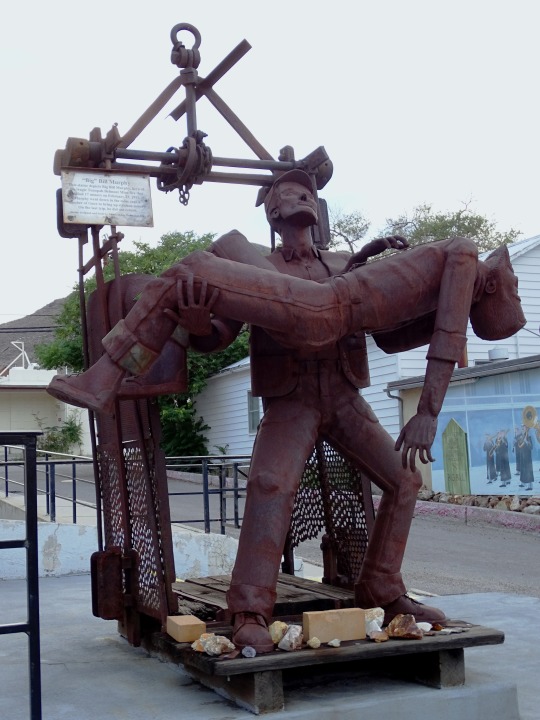
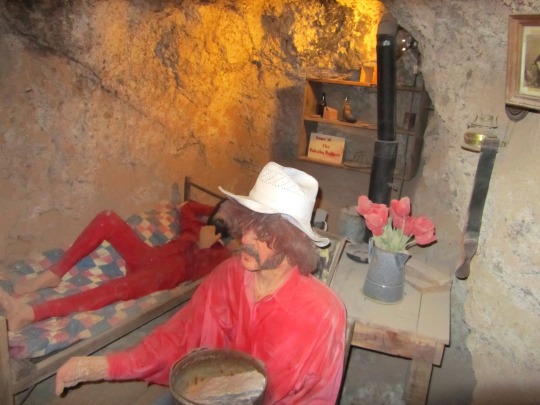





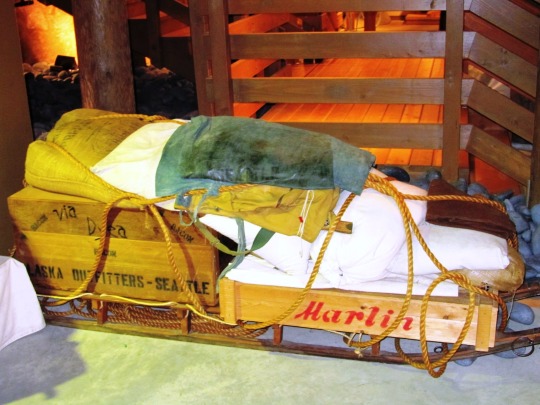
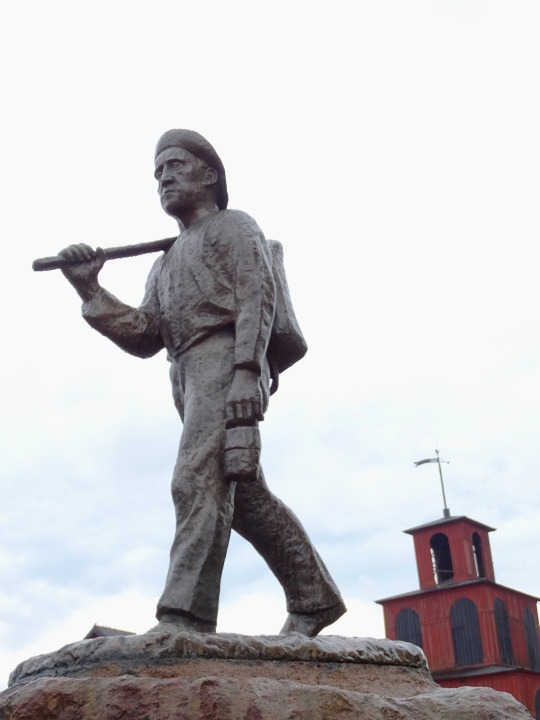
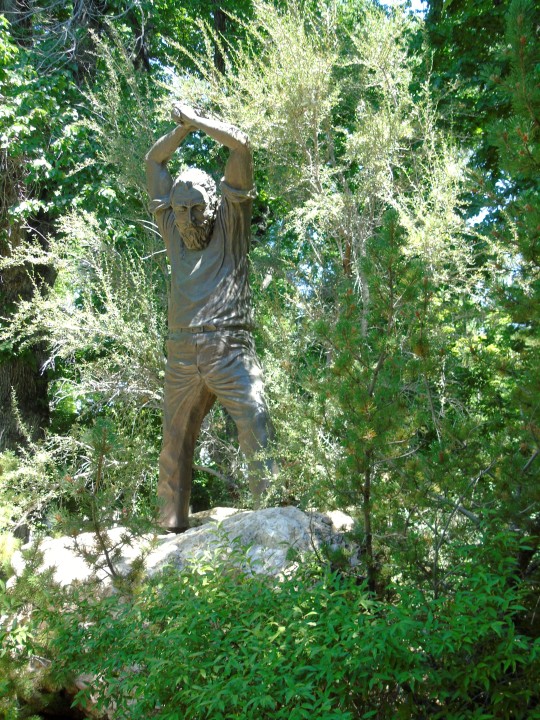
Talk Like a Grizzled Prospector Day
Talk Like a Grizzled Prospector Day commemorates the start of the California Gold Rush, which began on January 24, 1848, when James Marshall discovered gold while building a saw mill for John Sutter, near what is now Coloma, California. The day has its roots in International Talk Like a Pirate Day, and was inspired by Prospectors Day, which was once held at Knott's Berry Farm each year on January 24. It also was inspired by an episode of the Simpsons with the following exchange:
Bart: That ain't been popular since aught-six, dagnabbit. Homer: Bart, what did I tell you? Bart: No talking like a grizzled 1890's prospector, consarn it.
Common examples of characters talking like grizzled prospectors in popular culture include Dallas McKennon narrating Disneyland's Mine Train Thru Nature's Wonderland and Big Thunder Mountain, Gabby Hayes—both drunk and sober—in many Western films, Gabby Johnson in Blazing Saddles, Will Ferrell as Gus Chiggins on Saturday Night Live, and Walter Huston in The Treasure of Sierra Madre.
Prospectors first came to the Sacramento Valley after Marshall found flakes of gold in the American River near Sutter's Mill, at the base of the Sierra Nevada Mountains. At the time there were less than 1,000 non-native inhabitants in California. Newspapers began reporting the discovery of gold, and by August, 4,000 miners had descended on the area. The first people that came from outside of the territory came by boat, and arrived from Oregon, the Sandwich Islands—soon to be called the Hawaiian Islands, Mexico, Peru, China, and Chili.
In December 1848, President James K. Polk announced a report by Colonel Richard Mason which spoke of the abundance of gold in California; this prompted more prospectors to travel to the territory. Throughout 1849, thousands arrived, either traveling by sea or over land, and became known as '49ers. Mining towns popped up in the area, and with them came shops, saloons, and brothels. Many mining towns became lawless, and San Francisco became an important city in the territory. By the end of 1849, the non-native population had swelled to 100,000. The Gold Rush helped California gain statehood in 1850, and gold discovery peaked in the state in 1852. In all, more than 750,000 pounds of gold were extracted during the Gold Rush.
The implication of a grizzled prospector is of one who has stayed so long searching for gold that their hair has turned gray. Some prospectors refused to quit the profession and continued to live in the Western territories. So, when Bart Simpson mentioned a grizzled prospector from the 1890s, he was referring to a prospector that had stayed more than forty years after the Gold Rush happened, still trying to find gold, or other commodities such as silver, oil, radium, and uranium. Besides a gray beard, the stereotypical grizzled prospector had faded clothes, missing teeth, a pickaxe, and a mule. They had bouts of gold fever, and were suspicious of whoever came close to their claim.
How to Observe Talk Like a Grizzled Prospector Day
Celebrate the day talking like a grizzled prospector. Here are a few words prospectors commonly used, that you could use today:
Dadburn: to curse; e.g.: "Dadburned boll weevil done 'et my crop!"
Hornswoggle: to embarrass, disconcert, or confuse; e.g.: "I'll be hornswaggled!"
Consarn: the entirety of something, also a curse word.
Dumbfungled: all used up; e.g.: "This claim is dumbfungled! There's no gold left!"
Bonanza: a mine with lots of gold.
Borrasca: a mine with no gold.
Baby buggy: wheel barrow.
Muck: to dig with a shovel.
Powder monkey: a miner who used dynamite to make holes.
Johnny Newcome: a miner new to camp.
Blackjack and saw bosom: coffee and bacon.
Paydirt: land rich in gold.
Panned out: if they had found gold while sifting through dirt with a mining pan, then things had "panned out."
Flash in the pan: something shiny in pan that turned out to be nothing, or just a small piece of gold.
Stake a claim: claim a piece of land as your own as a place to search for gold, must stake the land with wooden stakes when you arrive.
The day could also be spent watching films such as The Treasure of Sierra Madre, or old Western films starring Gabby Hayes. A visit to the Sutter's Mill replica and the Gold Discovery and Visitor Center in Marshall Gold Discovery State Park could also be planned. The days' Facebook page could also be explored.
Source
#Calico Ghost Town#California#Talk Like a Grizzled Prospector Day#travel#USA#NationalTalkLikeAGrizzledProspectorDay#24 January#vacation#original photography#sculpture#public art#tourist attraction#landmark#Sweden#Falun Mine#Gruvabetaren by Helge Zandén#Nevada#Carson City#Tribute to Nevada Miners by Greg Melton#Big Bill Murphy by Adam Skiles#Tonopah#Klondike Gold Rush - Seattle Unit#Seattle#Washington
32 notes
·
View notes
Text
Westward Ho! Cincinnati Men Caught The California Gold Fever In 1849
It took a long time in 1848 for news to travel from California to Cincinnati. Gold was discovered at Sutter’s Mill, northeast of San Francisco, in January of that year, but Cincinnatians remained blissfully unaffected by gold fever until the middle of September.
By December 1948, Cincinnati merchants were placing advertisements in the local papers, offering camping and mining supplies to young men heading westward. As the new year of 1849 dawned, Cincinnati was fully possessed by visions of gold. Local newspapers printed dozens of announcements similar to this one, from the Commercial Tribune [23 February 1849]:
“A party of enterprising gentlemen of this city, completed their arrangements yesterday, packed up their trappings, and took passage on the steamer Chief Justice Marshall, for California. They design to sail from New Orleans, and either cross the Isthmus, or take the land route, via City of Mexico. The choice of these routes depends on contingencies. The party is composed of the brothers Moses, Mr. Collins, jeweler, and Messrs. Varney, Light, Vater, and the brothers Fagan.”
The Cincinnati Commercial [9 March 1849] reported on a company of 20 Cincinnatians setting out on the overland route to California, with a plan to cover expenses by selling gunpowder:
“They take with them one hundred kegs of powder, which on their arrival will be distributed, five kegs to each man – thus furnishing each a handsome capital to start on.”
In April, the “Independent Pacific Dispatch Company,” composed of 25 Cincinnati men, departed, also on the overland route. They loaded their pack mules onto the steamboat John Hancock, bound for Independence, Missouri, where they would commence hoofing across the continent.
As a major port along the Ohio River, Cincinnati not only witnessed local boys departing for the gold fields, but steamboats full of similarly determined young men passing through town. The Commercial Tribune [14 April 1849] was agog at the mass of virility floating westward down the Ohio:
“The tide of emigration to California is, in its extent, beyond all historical parallel; and will, in future times, stand prominent as the great event of the Nineteenth Century.”
Many of those adventurers, especially those from rural districts, stopped in Cincinnati to stock up on the supplies required to operate a basic gold-mining operation. Our shopkeepers were delighted to welcome the business. Gustav Sellin, purveyor of tin goods, advertised a gold-washing machine “of the most ingenious construction,” along with wash bowls, scoops and strainers. Philip Pike touted his “Imitation French Brandies, Holland Gin, Rum and Wines,” guaranteeing that a thousand-dollar investment in his beverages could be recouped for twenty times that amount in the thirsty gold fields. Miller Cornelius Sanders Bradbury boasted about his novel “steam-dried flour” warranted not to sour or get moldy for two years – ideal for the long trail westward.
Some Cincinnati businessmen just surrendered and joined the migration. Real estate mogul Thomas Hurst put a flour mill out near Sedamsville up for sale along with eight houses in the city. He was, as they say in the trade, a motivated seller. He closed his advertisement with this explanation:
“As I am making preparations for California, application should be made soon.”

Once folks arrived in California, they often discovered that panning for gold was not exactly as advertised. For instance, Benjamin Cory (Miami University Class of 1842, Medical College of Ohio Class of 1845) was busily engaged trading clothing to Native Americans in exchange for gold. Called to attend to a wealthy ranchero, Doctor Cory found himself trapped. In a letter home, Cory complained:
“My patient is quite smart this morning; he says I shall not leave him till all danger is over. ‘Charge what you please, Doctor,’ he says, ‘and it shall be paid; here is my ranch, with its horses, cattle, &c. &c. and I have a good large bag of gold.’ I am sorry, dear brother, that I ever had doctor stuck to my name; it is more trouble than profit; I am vexed to death; I tell people that I can get more gold in the mountains by digging and trading, than my conscience will permit me to charge my patients.”
Doctor Cory ended up doing okay for himself. The 1909 Miami University alumni directory notes that, before he died in 1896, he was elected to the first legislature of the new state of California in 1850 and had a distinguished medical career in Santa Clara and San Jose.
Joseph Talbert, a carpenter, who left Cincinnati in February 1849, wrote home that his traveling party of fifty had arrived safely in the gold fields. Talbert, however, after trying to mine gold for a couple of weeks, learned he could make more money as a carpenter, building cabins and gold-washing sluices than he could actually trying to find gold.
The Guysi brothers quit their jobs at B.F. Greenough’s lamp oil distillery on Main Street and endured a sea voyage of 160 days to round the tip of South America. They arrived in a San Francisco of 30,000 souls mostly housed in tents and suffering from dysentery. The only water available was polluted with copper, a spot of ground large enough to pitch a tent rented for $150 a month, and gambling was rampant. At least one of the brothers, Jacob, stuck it out; he was buried in the hills overlooking San Francisco Bay when he died at age 79 in 1906.
Joe Heywood had a solid career and sterling prospects here in Cincinnati. He was a butcher by trade, and regularly made the newspapers for the quality of his provender and the skill with which he decorated his shop. He was repeatedly referred to as a very handsome man who cut a dashing figure as a volunteer fireman. He was also known as a dependable “b’hoy” – a tough character – in the days when volunteer fire companies battled over which would put out the fire and collect the insurance money. Still, the Cincinnati Commercial of 9 January 1849 recorded the westward emigration of Heywood, along with Mathias Oliver, James Wilson, Alexander Burns and James McAlpin, all stalwarts of the “Rovers” fire company.
While most young men trudged west in hopes of sending pounds of bullion home, Heywood had no intention of digging anything once he got to California. Instead of packing a pick and shovel, Heywood had 1,500 cards printed to announce his business as a butcher and provision merchant. He seems to have succeeded admirably. After a sea voyage of 156 days, Heywood arrived in San Francisco and set up shop. A letter from a fellow firefighter reported that Heywood replicated the annual Cincinnati Christmas meat parade at his shop that December. Heywood himself wrote a long letter home describing his adventures aboard the ship and promising to write as soon as he could to “Lizzy.” He must have been persuasive. Joseph Heywood and Miss Eliza L. Hensley of Cincinnati were joined in matrimony on 1 July 1856 at San Francisco’s International Hotel.

7 notes
·
View notes
Text
rules: 🎶 when you get this, list 5 songs you've been listening to & tag 5-10 ppl
tagged by @girderednerve
-=-
Quecreek Flood - Anais Mitchell || The Quecreek Mine Disaster happened in 2002 which made me realize how deeply Anais had her finger on mining's pulse from her background and when writing Hadestown. The line "And they wore the same frown when they drove out of town to find the next sellable story" gives me chills. Plus it's just a GOOD fucking song.
Sutter's Mill - Dan Fogelberg || Been listening to this on repeat. Good California vibes. Scratches my brain.
Cake by the Ocean - DNCE || Listen idek.
Spirit in Disguise - Olive Klug || <3
Hard Times Come Again No More - The Longest Johns || <3
#self#<333#I haven't heard of cumberland gap and silicosis is killing me! I'll have to give those a listen and add those to my mining playlist!
5 notes
·
View notes
Note
not trying to pressure you, but was just wondering if you would be updating prairie dog soon?
Hey dollface! Thank you so much for the lovely ask. I can't tell you how much it means to me that you're still interested in Prairie Doll!!! I promise I'm working on it, and it's gonna be a pretty chunky update once I'm finally ready to post. 🥰🥰🥰 As a "thank you" from me to you for checking in on this and letting me know you're patiently waiting, I hope you enjoy this snippet from the next chapter!
*~*~*
“What’s eatin’ you this morning?” Ash asked, the harsh grumble in his voice at least partly due to just waking up.
The cigar stopped twirling, but Fez still didn’t respond.
Ash muttered, “Maudlin fucker,” under his breath, but Fez didn’t seem to hear him as he simultaneously asked, “You ever think ‘bout what we’re gonna do when Kitty dies?”
Whatever tiredness lingered in Ash’s body immediately evaporated as he abruptly sat up in bed. “What the fuck’re you talkin’ ‘bout? When Kitty dies?”
Fez finally turned to Ash, the urgency in his voice drawing his attention like the reports of gold at Sutter’s Mill had drawn so many to the California Territory. “Ain’t sayin’ she’s gonna be movin’ on to her heavenly reward anytime soon,” he clarified, to little effect. Taking a breath, he looked down at his hands and stared at the cigar like his concentration alone would cause it to light.
“Jus’ sayin’,” he said after another minute. “Ain’t nothin’ guaranteed in life. We’re Kitty’s only livin’ kin. How we gonna run the store here an’ the one in Springfield with jus’ the two of us? We ain’t never lived apart. ‘Sides, you wanna be runnin’ a store forever? What ‘bout families of our own? Who's gonna be here to carry on Kitty’s legacy after we’re gone?”
10 notes
·
View notes
Text
#unhallowedarts - Raising Monsters: Melville's Moby Dick
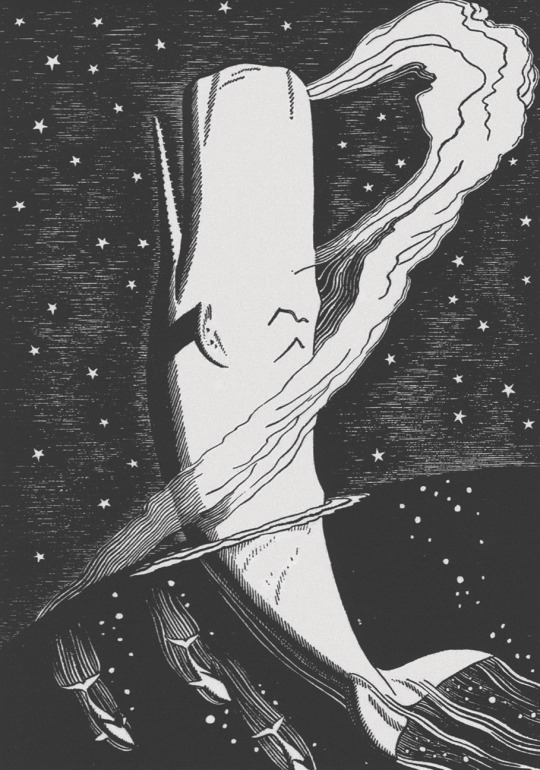
“Ye Gods! What a commentator is this Ann Alexander whale. What he has to say is short & pithy & very much to the point. I wonder if my evil art has raised this monster."
Thusly cried Herman Melville in London, back in 1851, just a few weeks before the publication of the cetacean novel that hardly anyone felt compelled to read for the next 70 years. A huge sperm whale had attacked and sunk the good ship “Ann Alexander” out of New Bedford some 2,000 miles east of the coast of Peru. It was one of the rare but not unheard of incidents when a bull sperm whale had attacked a ship three times his own size. And while the monster was slain in January 1852 by the crew of another New Bedford whaler, the “Rebecca Sims”, off the Galapagos Islands, another whale of a tale was still told along the Eastern Seaboard: the story of the “Essex”, sunk by a sperm whale out in the open Pacific Ocean in 1820 along with the spine-crawling ordeal of her crew’s survival.

The story became one of the major inspirations for Melville, along with the account of “Mocha Dick”, a white bull sperm whale with his head covered in barnacles, his peculiar method of spouting and his ability to come out of the water completely when he breached in anger, recorded in the “Knickerbocker” magazine in 1839. And there was Melville’s own experience, gathered aboard the whaler “Acushnet” of Fairhaven, Mass., and the Australian whaleship “Lucy Ann”, a time 23 years old Melville found so unbearable that he felt compelled to jump ship twice. But even though “Moby Dick” comes in the guise of a fable about the harsh days of whaling, the gory business is but a background, almost a sideshow of America’s greatest novel.

Melville’s audience expected something along the lines of “Typee” or “Omoo”, both best-selling novels inspired by the author’s adventures in the South Pacific. However, “Moby Dick” came as 200,000 word leviathan full of allusions and elaborations on Homer, Shakespeare, Milton, Byron, the Scriptures, marine mammals, quotes from completely obscure sources and, of course, the sea. Unfortunately, the majority of the American readers’ tastes had turned westward to the Great Plains and California after gold had been found at Sutter’s Mill in 1848, causing a period of migration in the Northern Hemisphere.

Yarn of Nantucket sleigh rides, whales and sailors were no longer that interesting, but the attempt to capture the totality of human existence and cram it aboard a whaler, anticipating the great Russian novels of the late 19th century and the classical modernists, Joyce, Dos Passos and Döblin, was simply too much to stomach. It took the turmoil of the 20th century to ripe readers for “Moby Dick” and its baroque tour-de-force through the summary of literary experience of almost 3,000 years. In 1902, almost like a symbol for the change of the audience and the appreciation of the novel, a white sperm whale was killed off the Azores, a 90’ long scarred old bull, veteran of uncounted fights, allegedly a hundred years old. The modern whalemen brought him down with a modern harpoon tipped with an explosive device.

All illustrations above by Rockwell Kent (1882 -1971) for the 1930 edition of Herman Melville's "Moby Dick"
#unhallowedarts#dark aesthetic#dark literature#classic literature#classic fiction#moby dick#herman melville
5 notes
·
View notes
Video
youtube

O.K. “Sutter’s Mill,” lyrically, leans a little too heavily into Manifest Destiny in the end, but the melancholy in the music and arrangement grabbed the first time I heard it -- so I still go back and listen from time to time.
2 notes
·
View notes
Text
Thank you to the people who followed me for my last solangelo post, but?? I’m not actually funny??? Or consistent in what fandom I post about???
Like I appreciate y’all, but I really just typed out a random pun that came to mind and it somehow landed well. And with the right fandom.
So if you thought you found a comedy gold mine, I’m here to tell y’all that you really just stumbled across Sutter’s Mill 50 years after the gold rush and happened to find a hidden gem.
#pjo#solangelo#text post#apology#I really feel like I scammed the few of you who followed#sorry for that
6 notes
·
View notes
Text
American Entrepreneur, and Former President & CEO of One of the World’s Largest Bitcoin Mining Companies, Clark Swanson is Interviewed by Cointelegraph Full length, March 7, 2024
Bitcoin "halvings" historically are fraught times for BTC miners given the threat of plunging profits, and even bankruptcy as their block reward is halved. Is that still the case in 2024?
With each halving event, bitcoin miners must adapt to a lower-margin environment. Those miners experiencing the volatility of the market forces, combined with the halving and collateralized equipment financing is a recipe for industry consolidation. In many cases, it will present opportunities for miners with strong balance sheets looking for distressed assets. In the most recent bull market of 2021, we witnessed the expansion of the mining sector, much of which was financed by way of asset-backed loans. This debt fueled growth and has become a popular way in which miners have been able to expand their operations and infrastructure. While many miners were able to sustain the turmoil of the last bear market, overly leveraged operators were far less fortunate. However, generally we have seen these mining fractures later in the post halving market cycle.
During the 3rd halving which occurred on May 11, 2020, bitcoin showed its durability as the hardest money in the face of economic chaos. During the Covid-19 pandemic, bitcoin reached new highs and gradually assimilated into the mainstream narrative as "digital gold".
It's also important to recognize with each cycle there are different macroeconomic factors that have influenced market behavior. In the halving prior to May 11, 2020 we saw the beginning of institutionalized investment and regulatory agency interventions which helped to stabilize the market. Since then, the case for bitcoin entering the 4th halving which will occur at the end of April, 2024, has never been stronger. What is different today from historical halvings are the ETF's which have dramatically changed the bitcoin ecosystem. According to US Global Investors, as of February 29, 2024, bitcoin ETF's reached $43.2 billion of investment in comparison to gold ETF's which held $93.3 billion. The institutionalization of Bitcoin took less than 60 days, a stark contrast to the 20-year history of gold ETFs, which originated in 2004. These rapid inflows signify a demand shock to bitcoin's limited supply, especially as the issuance rate is set to decrease to 450 bitcoins per day after the halving. This reduction will drive prices even higher and blunt some of the market forces that have traditionally posed challenges for miners.
Bitcoin's time has come.
The next 10 years for the bitcoin miners can be compared to the gold rush of the 1800's. While there were several gold rushes that began in the 19th century, it was really the 1848 Sutter Mill discovery in Coloma, California which provided the greatest catalyst for a phenomenon that rippled the globe. This discovery sparked people from around the world to flood into California and with it came a profound impact on the economy. The resulting economic impact led to expanding infrastructure and the development of a support ecosystem that reached deep into industries like agriculture, transportation and banking. Today we are similarly witness to a growing phenomenon of decentralized finance, blockchain innovation, and the integration of healthcare, real estate, and other systems to the blockchain.
Assuming the industry comes through this halving -- i.e., survives in good form -- should we expect to see more institutional and/or corporate interest in owning Bitcoin, in your view?
To answer this question effectively, one should consider the asset class and opportunities to invest in stores of value.
Gold has held its position as a premier commodity for storing value for millennia. One key reason for this is its low stock-to-flow ratio, calculated by dividing the total amount of gold mined throughout history by its annual production rate, resulting in a ratio of approximately 66 years. Alongside its industrial applications, gold's enduring value stems from its relatively scarce annual production compared to the vast amount already mined. This characteristic has provided gold with stability and security, meeting the precondition necessary for establishing trust and confidence as a reliable store of value.
By the end of 2035, approximately 99.83% of all bitcoins will have been mined. The final Bitcoin is expected to be mined around the year 2140, at which point the total supply will reach its maximum limit of 21 million bitcoins. It cannot be inflated, counterfeited, or altered without consensus. It is decentralized, borderless, permissionless, programmable and resilient. The marketability theory of money holds that the easier it is to transact, the more pronounced it will become as "money". This theory demonstrated gold has a long evolutionary process which spans thousands of years. It's success as a store of value and marketable "money" was due to its ability to be more marketable than that of any other good.
As of January 2024, we have witnessed the beginning stages of gold demonetization from bitcoin. Bitcoin can be zipped inexpensively across time and space, in a matter of seconds and the ability to transact in real time is available 24 hours a day, 365 days per year. What may not survive in "good form" is gold. As we have already witnessed, the market's preference, if nothing else, has demonstrated a move away from gold towards bitcoin. Institutional adoption is clear by the signals we have witnessed since the bitcoin ETF's and more institutional and corporate interest can be anticipated particularly in light of corporate balance sheet transfers that rebalance cash to protect shareholder value from inflation.
If so, what form would this take? Might we see institutional investors and/or corporates purchasing BTC directly (like Tesla), getting Bitcoin exposure indirectly through spot market Bitcoin ETFs, or by purchasing shares in Bitcoin proxies like MicroStrategy (or public BTC mining firms)?
Tesla's adoption of bitcoin arose from Elon Musk's curiosity around the innovation of money, an acute understanding of fiat currency debasement, and an affinity for technological innovation, among a myriad of other reasons. Michael Saylor on the other hand, with whom is one of my personal mentors, recognized the limitations that existed throughout all asset classes in the world and selected bitcoin as an apex commodity to shield his own balance sheet from various forms of inflation.
With the approval of ETF's, investors and/or corporates can now easily transact to get portfolio exposure and diversification with bitcoin. This is the preferred method to garner exposure in the same way corporations and investors have elected to buy gold ETF’s over personal custody of physical gold. Of course, there are companies that may prefer to take custody of their own bitcoin, but that comes with certain responsibilities that can otherwise be outsourced to managed money, such as wallet software, private keys, secure storage, backup and recovery, etc.
On the other hand, mining firms serve a different investment paradigm because they carry managerial risk. Although miners offer additional leverage on bitcoin, many of them have reached an intersection of value where investors may be better off buying bitcoin or an ETF on a risk adjusted return. Investments in miners may be considered for other reasons. Innovative miners will undoubtedly discover new ways to adapt and deliver value to the blockchain, pioneering the industry of decentralized finance. Those that reach the prominence of technological innovation will generate superior returns for shareholders. Just like we have seen in every industry, the future of bitcoin mining will face consolidation and, in the end, the largest hashrate will disproportionately favor the largest miners.
As an investment thesis, smaller public miners with management that have a proven track record offer superior return investment optionality. As the Chairman & CEO of one such miner, called Blockmetrix, Inc., we plan to grow exahash by more than 300% this year alone. After raising $70 million in 2021, the company has built a platform similar to what Blockcap had achieved in the last cycle, four years ago. However, the environment has changed since 2021 and small miners must also be more mindful of variable costs, the most significant being power. To that end, Blockmetrix has already built a10 megawatt facility and operates approximately 6,000 rigs with plans to reach 40 megawatts and 2.66 exahash by the end of 2024.
Overall, do you expect the halving to have a positive effect on the price of BTC, as well as a boost in Bitcoin adoption, in 2024 -- both before and after the actual halving event?
The halving will certainly have a positive effect. Historically, Bitcoin halving events have been associated with upward price movements which are compounded by the reduction in the rate of new bitcoin issuances. Unlike during prior halving’s, we have also never had a 10x liquidity catalyst - the market for ETF's. Increasing demand has created this supply-demand imbalance that continues to drive prices higher, contributing to price appreciation that we have seen prior to the 2024 halving.
Ultimately my view of the halving is only a net positive to bitcoin because without it, implied scarcity would be factored at a different discount rate, the outcome of which would have dramatic price variance to what we have seen today. It is the finite supply and the halving of bitcoin which are characteristics which help make bitcoin the hardest money ever created. It also may be the first man-made money to survive more than 200 years.
0 notes
Text
The California Gold Rush, which began in 1848, stands as one of the most transformative and iconic events in American history. Its impact on the economic, demographic, and social landscape of California, and indeed the entire United States, was profound, catalyzing a mass migration on a scale never before seen and setting the stage for California's rapid transformation into a land of wealth, diversity, and global significance.
### Discovery at Sutter's Mill
The Gold Rush commenced in January 1848 when James W. Marshall discovered gold flakes in the American River at the base of the Sierra Nevada Mountains near Coloma, California, at a sawmill owned by John Sutter. Despite attempts to keep the discovery secret, news leaked out and quickly spread, reaching not only the rest of the United States but also distant corners of the globe.
### The 49ers and Mass Migration
The year 1849 saw the peak of the Gold Rush, with over 300,000 people, known as "49ers," flocking to California from the United States and abroad, including Latin America, Europe, Australia, and China. These gold seekers traveled by sea and overland, facing tremendous hardships such as disease, starvation, and long, perilous journeys. Yet, the promise of wealth was too enticing to resist.
### Impact on California's Population
Before the Gold Rush, California was a sparsely populated region with a mix of Native American tribes and settlers of Mexican descent. The influx of gold seekers transformed it almost overnight. Towns and cities sprang up to accommodate the miners, while San Francisco grew from a small town to a major port and commercial center. The population boom also led to California's rapid admission to the Union as the 31st state in 1850.
### Economic Transformations
The Gold Rush significantly impacted the U.S. economy, contributing to a period of rapid economic growth. It generated immense wealth, much of which was invested in developing other industries and infrastructure within California, such as railroads, banking, and agriculture. This diversification helped lay the groundwork for California's future as an economic powerhouse.
### Social and Environmental Impact
The social fabric of California became incredibly diverse, with communities of immigrants from all over the world contributing to the cultural landscape. However, this rapid influx led to significant social strife, including racial discrimination and conflicts over mining claims. Native American populations suffered greatly from displacement, disease, and the ecological disruption of their lands.
The environmental impact of the Gold Rush was also profound. Hydraulic mining techniques led to significant alterations of landscapes and waterways, some of which are still evident today. Forests were decimated to build new settlements and mining structures, and the influx of people and industry led to lasting environmental degradation.
During the California Gold Rush, it's estimated that miners extracted about 750,000 pounds (approximately 340,000 kilograms or 340 metric tons) of gold from the earth. The economic value of this gold was immense at the time and would be worth billions of dollars today.
In the initial years following the discovery of gold at Sutter's Mill in 1848, the extracted gold is estimated to have had a value of around $2 billion in today's dollars, considering the price of gold over time and adjusting for inflation. This figure is a rough estimate, as the value of gold has fluctuated significantly over the years, and the calculation of historical values into present-day dollars depends on the specific price and inflation metrics used.
To put the scale of the extraction into perspective, during the peak years of 1849 and the early 1850s, tens of thousands of miners extracted hundreds of tons of gold, significantly impacting global gold markets. The influx of gold from California led to economic growth not only in the United States but also internationally, as the gold found its way into global trade and finance.
It's important to note that while the immediate economic impact of the Gold Rush was substantial, leading to rapid population growth and the transformation of California's economy, the long-term effects were even more profound. The wealth generated from gold mining helped fuel further expansion and development across the Western United States, contributing to the nation's overall economic growth and development during the 19th century.
### Legacy
The legacy of the California Gold Rush is multifaceted. It played a crucial role in the westward expansion of the United States and underscored the American spirit of adventure and the pursuit of wealth and opportunity. California's transformation during and after the Gold Rush set the stage for it to become a melting pot of cultures and a leading edge of American innovation and progress.
However, the Gold Rush also serves as a reminder of the environmental costs of unchecked exploitation and the complex consequences of rapid population growth and economic development. The histories of those who were marginalized or suffered during this period, particularly Native Americans and immigrant miners, add critical depth to the Gold Rush narrative, emphasizing the need for a nuanced understanding of this pivotal chapter in American history.
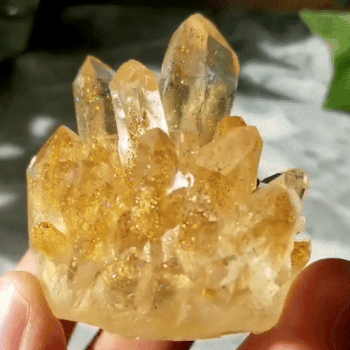
0 notes